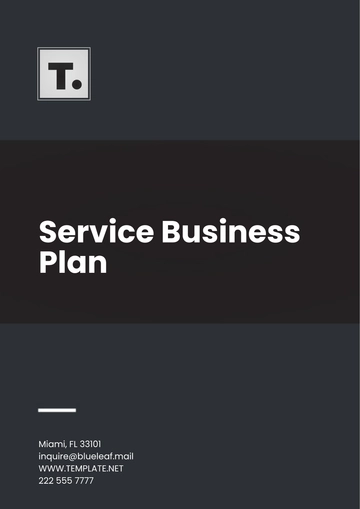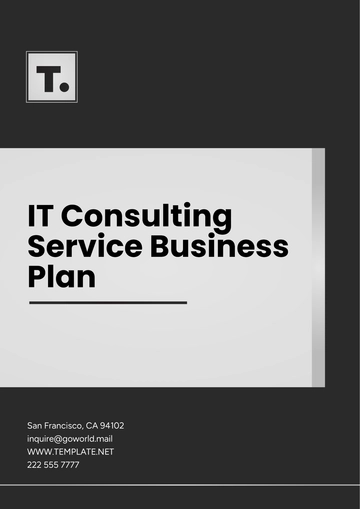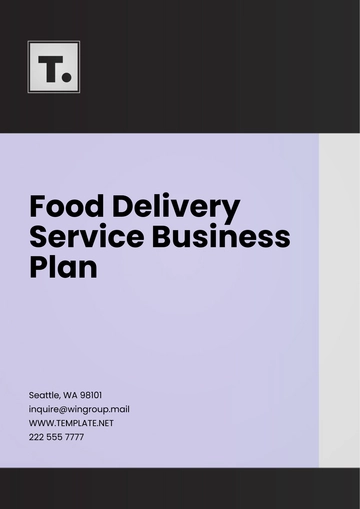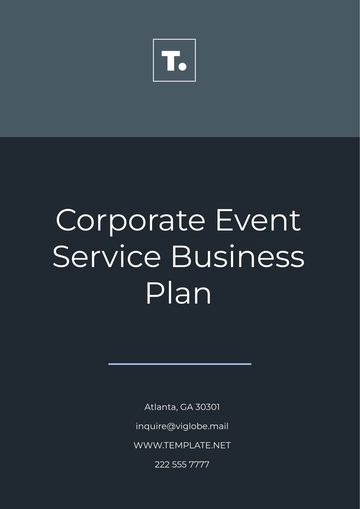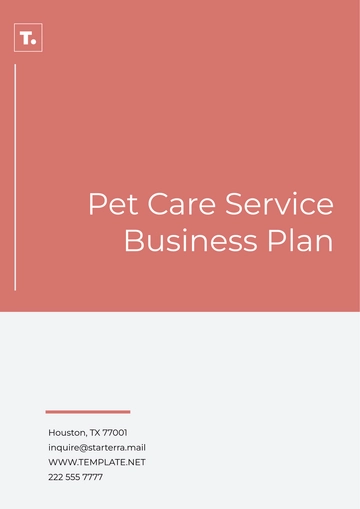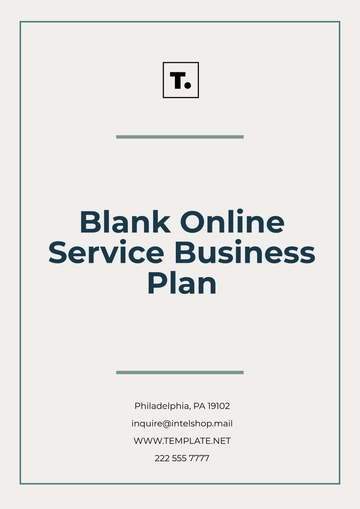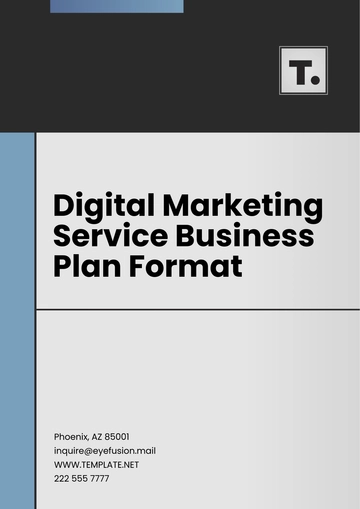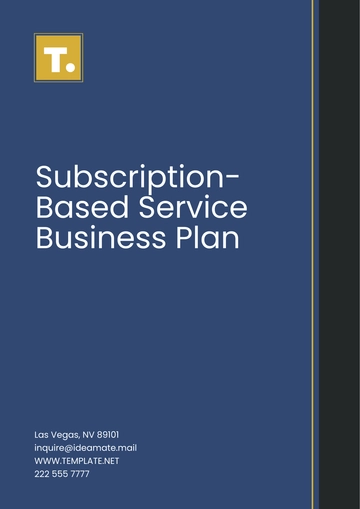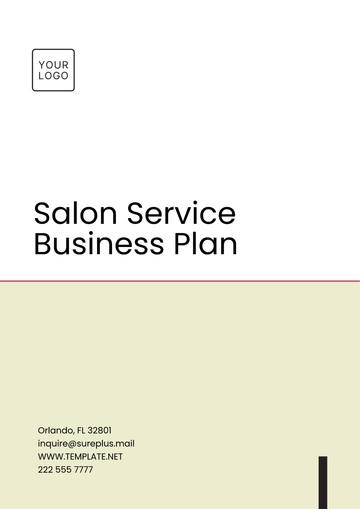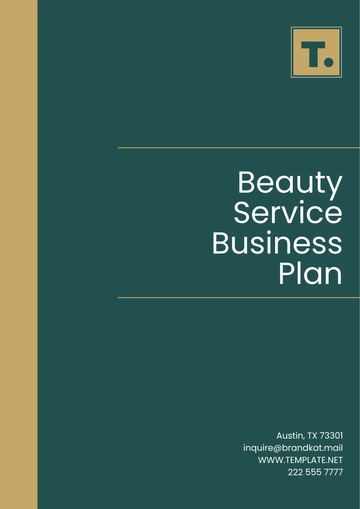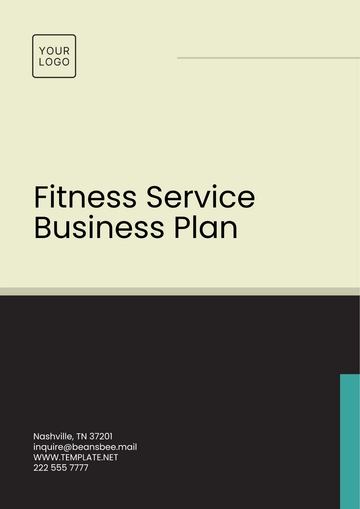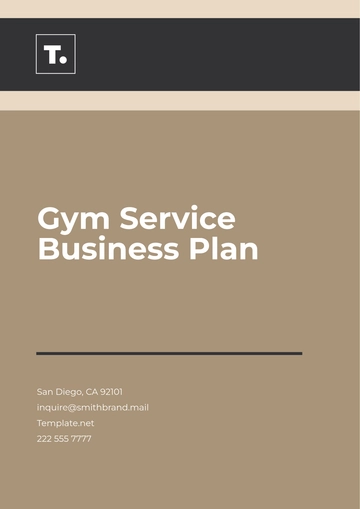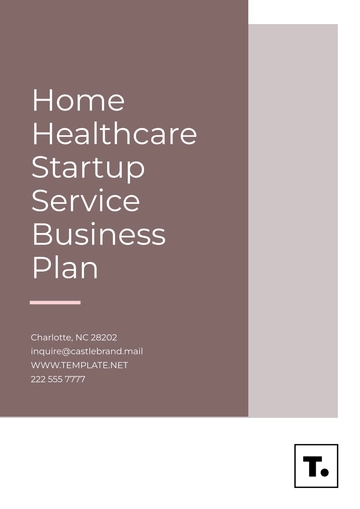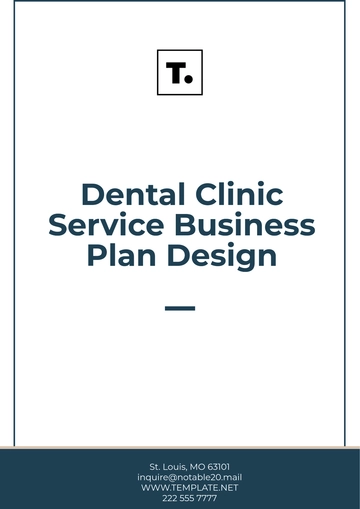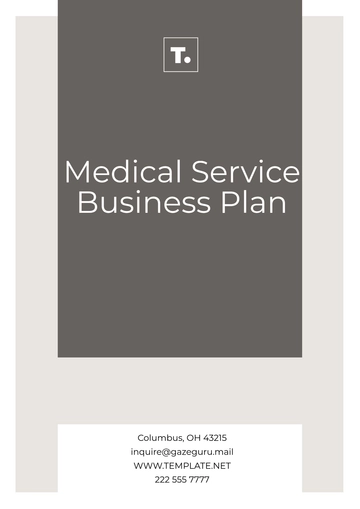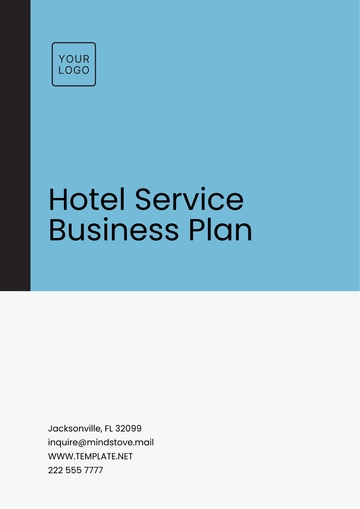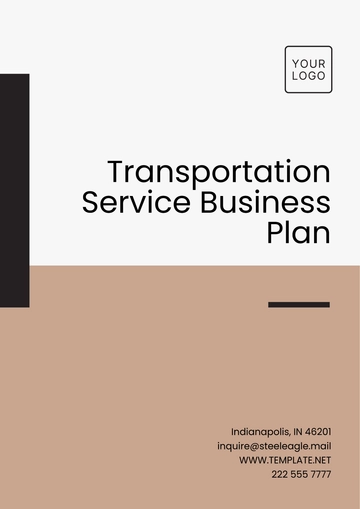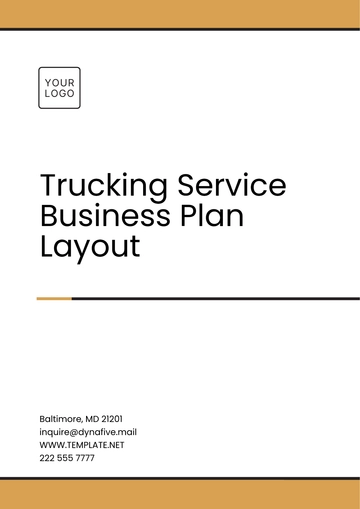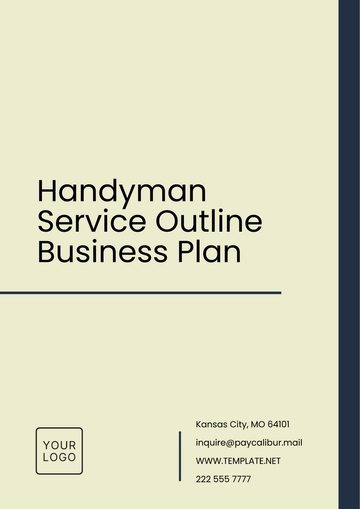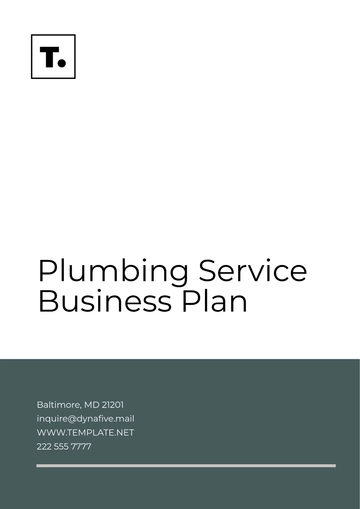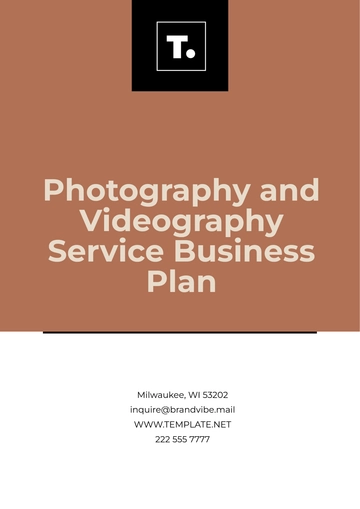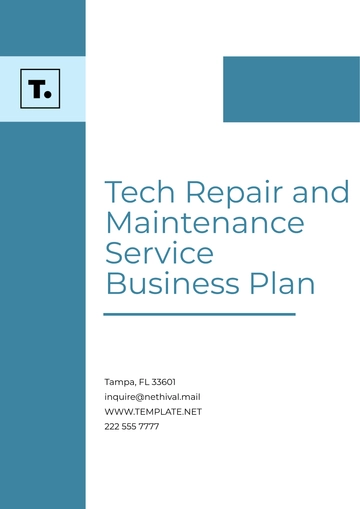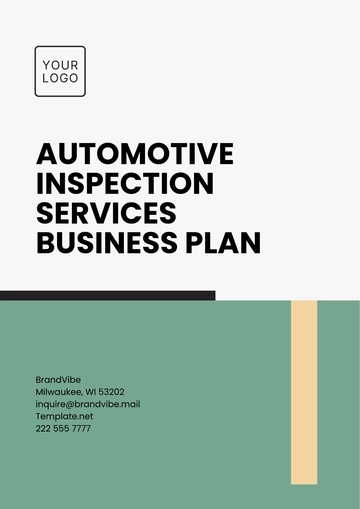Free Courier Service Business Plan
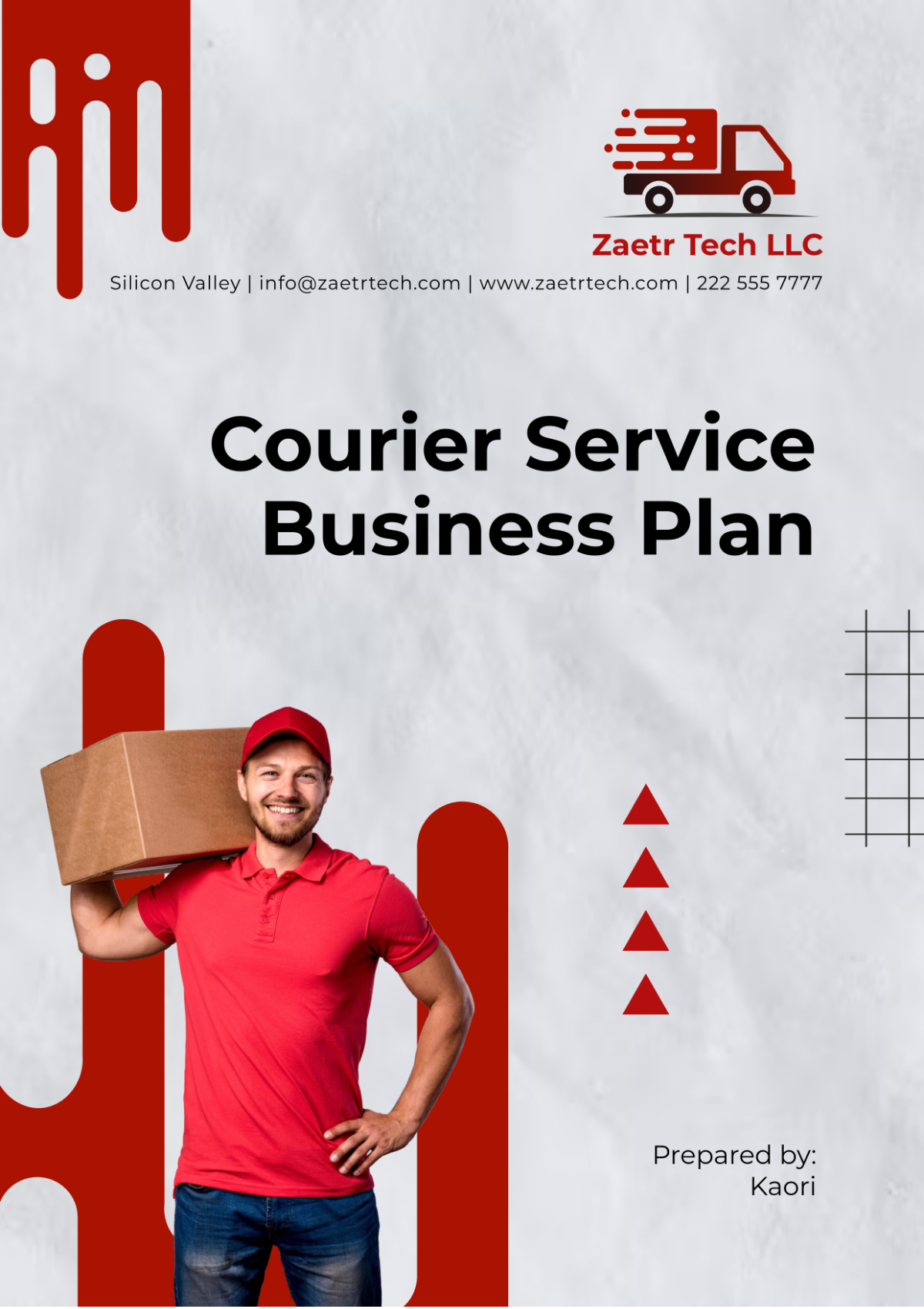
1. Executive Summary
1.1 Overview
[Your Company Name] aims to establish itself as a leading courier service provider by offering fast, reliable, and cost-effective delivery solutions in 2050 and beyond. As e-commerce continues to flourish, fueled by advancements in technology and changing consumer behavior, the demand for efficient courier services has skyrocketed. The global courier market is expected to exceed $[1 trillion] by 2050, presenting a significant opportunity for companies that can meet consumer demands. [Your Company Name] will leverage innovative logistics systems, smart transportation, and automation to revolutionize the delivery experience for businesses and individuals alike. By focusing on customer needs and technological integration, we will ensure timely and secure deliveries, enhancing our competitive edge in this rapidly evolving market.
1.2 Mission Statement
Our mission is to provide seamless, timely, and cost-effective courier services to our clients through the use of advanced technology and exceptional customer service. We are committed to delivering packages securely and efficiently while minimizing our environmental impact. We believe that every delivery is an opportunity to build trust with our customers, and we aim to exceed their expectations at every step of the process.
1.3 Vision Statement
By 2055, [Your Company Name] will be recognized as the leading courier company known for exceptional service, sustainability, and technological innovations that redefine delivery standards. We envision a future where our services are synonymous with reliability and speed, making us the preferred choice for both businesses and individual consumers in the logistics space.
1.4 Key Objectives
Market Penetration: Achieve [15%] market share in the first [3 years] of operation through strategic marketing and partnerships.
Customer Satisfaction: Maintain a customer satisfaction rating of [90%] or higher, ensuring that feedback is actively sought and addressed.
Revenue Growth: Generate annual revenue of $[10 million] by year [3], driven by a diverse service offering and a strong customer base.
Operational Efficiency: Achieve delivery on-time rates above [95%], ensuring that our systems and processes are continually optimized for performance.
2. Company Description
2.1 Company Name and Location
Company Name: [Your Company Name]
Headquarters: [City, Country], a strategic location that allows for easy access to key markets and logistical hubs.
2.2 Legal Structure
[Your Company Name] will be structured as a limited liability company (LLC). This structure provides flexibility in management while protecting personal assets from business liabilities. This legal framework will also allow for easier capital acquisition as we seek investment for growth and expansion in the early years.
2.3 Business Model
We will operate on a B2B and B2C model, catering to both businesses that require shipping solutions and individual customers seeking personal delivery services. Our primary revenue streams will include:
Per-package fees: Charging a base rate for all deliveries, with additional fees for express services, ensuring transparency in pricing for customers.
Subscription model: Offering businesses monthly or annual subscriptions for bulk delivery services, fostering long-term relationships and guaranteed revenue.
Premium services: Offering same-day or drone delivery services at a higher price, catering to time-sensitive deliveries, which is a growing segment of the market.
2.4 Core Values
Reliability: Every package delivered on time, every time, forming the backbone of our service promise.
Innovation: We embrace cutting-edge technology to improve service efficiency and customer experience continuously.
Customer Focus: We ensure customer needs and satisfaction are at the forefront of every decision, listening to feedback to refine our services.
Sustainability: We prioritize eco-friendly operations to reduce environmental impact, adopting practices that reflect our commitment to the planet.
3. Market Research and Analysis
3.1 Market Overview
The global courier and delivery services market has experienced rapid growth, largely driven by e-commerce and the shift in consumer purchasing habits towards online platforms. By 2050, this market is projected to exceed $[1 trillion], with increasing demand for rapid and convenient deliveries, especially in urban areas. The rise of mobile technology and app-based services has also contributed significantly to the growth of the courier industry. Customers now expect not only speed but also transparency and reliability, making it essential for courier companies to evolve and adapt to these changing expectations.
3.2 Target Market
[Your Company Name] will primarily focus on the following segments:
E-commerce retailers: Offering last-mile delivery solutions for online stores, which have become increasingly crucial in providing a satisfactory shopping experience. With e-commerce expected to grow at a rate of [10%] annually, this sector presents a valuable opportunity for steady revenue.
Corporations: Providing reliable courier services for document and package deliveries, catering to businesses that require time-sensitive shipments to maintain operational efficiency. This includes legal documents, medical supplies, and other critical packages.
Individuals: Catering to personal deliveries, including gifts, food, and other small packages, which are increasingly popular among consumers looking for convenience in their everyday lives.
Demographics
Age: Individuals aged [20-50] years old, particularly those who are tech-savvy and accustomed to using apps for various services.
Income: Mid to high-income earners who are comfortable with online transactions and value quality service over cost.
Location: Urban and suburban areas with heavy reliance on fast shipping solutions, particularly those with dense populations and high levels of online shopping.
Psychographics
Our target customers value speed, reliability, and convenience. They are accustomed to the fast pace of modern life and expect timely deliveries with minimal hassle. Many are environmentally conscious and prefer companies that demonstrate a commitment to sustainability. They are also likely to use technology to enhance their shopping experience, favoring services that offer real-time tracking and instant communication.
3.3 Market Trends
Technological Integration: Customers increasingly prefer tracking their packages in real-time via mobile apps, leading to higher satisfaction and reduced anxiety regarding delivery timelines. Integrating augmented reality (AR) for enhanced tracking visualization could further improve customer engagement.
Sustainability: Customers are becoming more selective, increasingly choosing companies that implement green initiatives, such as utilizing electric vehicles and eco-friendly packaging solutions. The demand for carbon-neutral delivery options is on the rise.
Instant Deliveries: The demand for same-day or even drone-assisted 1-hour deliveries is growing, driven by the increasing consumer expectation for immediacy in all services.
3.4 Competitor Analysis
Competitors include established players like FedEx, UPS, and DHL, along with emerging tech-driven courier companies offering drone or autonomous vehicle deliveries. Understanding their strengths and weaknesses is crucial for positioning [Your Company Name] effectively in the market.
Key Competitor Insights:
FedEx: Known for its vast network, FedEx offers reliable global shipping but may charge higher prices, making it less accessible for smaller businesses and individual consumers seeking affordable options.
UPS: While UPS has a strong reputation for reliability, it has been slow to adopt sustainable practices, which may be a disadvantage as eco-conscious consumers grow in number.
DHL: Strong in international shipping, DHL is well-established, but it faces challenges in local, same-day deliveries, which is a critical focus area for [Your Company Name].
3.5 SWOT Analysis
Strengths | Weaknesses |
|---|---|
Use of advanced technology (e.g., drones, automation) | High initial capital investment required to launch and maintain operations. |
Strong focus on customer service and satisfaction | Limited brand recognition in early years may hinder customer trust. |
Diverse range of services (subscription, premium) | Potential logistics challenges as the company scales operations quickly. |
Opportunities | Threats |
|---|---|
Growing e-commerce demand creating a higher volume of potential deliveries | High competition from established players and new entrants. |
Expansion into new delivery methods (e.g., drones) can attract tech-savvy customers | Regulatory hurdles for drone delivery that may delay implementation. |
Offering eco-friendly, sustainable delivery options aligns with consumer trends | Rising fuel and transportation costs could impact profitability. |
4. Operations and Logistics
4.1 Technology and Automation
By 2050, automation will play a significant role in courier services, fundamentally changing how deliveries are made and tracked. [Your Company Name] will employ:
Autonomous vehicles: For urban and long-distance deliveries, reducing labor costs while maintaining delivery efficiency. These vehicles will utilize AI for route optimization and real-time traffic analysis.
Drones: Employed for short-range deliveries in densely populated urban areas, facilitating rapid transport of packages, especially for urgent deliveries such as medical supplies and essential goods.
AI-driven route optimization: This system will ensure the most efficient delivery routes are always used, thereby reducing fuel consumption, time, and environmental impact.
Blockchain technology: This will be used for ensuring end-to-end package tracking and enhanced security, allowing customers to have complete visibility over their package's journey, thus increasing trust.
4.2 Fleet and Equipment
[Your Company Name] will maintain a mixed fleet of:
Electric delivery vans: Designed for eco-friendly, larger deliveries while minimizing our carbon footprint.
Drones: For fast, small-package deliveries, equipped with advanced navigation systems to avoid obstacles and ensure safe landings.
Autonomous vehicles: Designed for long-distance deliveries, ensuring cost-effectiveness and operational efficiency, while reducing the need for human drivers.
Fleet Size
Year 1: 20 delivery vans, 10 drones, 5 autonomous vehicles
Year 3: 50 delivery vans, 30 drones, 15 autonomous vehicles
4.3 Fulfillment Centers
To ensure timely deliveries, [Your Company Name] will establish strategically located fulfillment centers:
Location 1: [City A], serving the northern metropolitan area.
Location 2: [City B], catering to the central urban area.
Location 3: [City C], targeting the southern regions.
Each fulfillment center will be equipped with advanced sorting technology and will utilize real-time inventory tracking systems to manage package flow efficiently. This setup will allow us to reduce delivery times significantly, aiming for [90%] of packages to be delivered within [2 hours] of order placement.
4.4 Delivery Process
Order Placement: Customers can place orders through our website or mobile app, selecting their delivery preferences.
Package Pickup: Once the order is confirmed, a courier or autonomous vehicle will pick up the package from the seller or customer location.
Sorting and Dispatch: The package will be sorted at the nearest fulfillment center based on delivery destination and prioritized for dispatch.
Delivery: The package will be delivered using the most efficient mode of transportation available, whether by electric van or drone.
4.5 Customer Support
An efficient customer support system will be established, providing multiple channels for customer interaction, including:
Live chat on our website and app for immediate assistance.
Dedicated customer service representatives available via phone for more complex inquiries.
Email support for non-urgent issues, with a guaranteed response time of [24 hours].
Feedback system to ensure continuous improvement based on customer input and experiences.
5. Marketing Strategy
5.1 Branding
[Your Company Name] will establish a strong brand identity characterized by:
Logo and Color Scheme: A modern logo that reflects our commitment to technology and reliability, using colors that convey trust and professionalism.
Tagline: “Delivering Your World with Speed and Trust,” emphasizing our core values of reliability and efficiency.
5.2 Marketing Channels
Social Media: Leveraging platforms such as Instagram, Facebook, and Twitter to engage customers through content that showcases our technology, delivery success stories, and customer testimonials.
Digital Marketing: Utilizing SEO and targeted ads to reach potential customers searching for courier services online, thereby driving traffic to our website and app.
Partnerships: Collaborating with local businesses and e-commerce platforms to provide exclusive delivery services, enhancing brand visibility and market reach.
5.3 Promotional Strategies
Launch Promotions: Offering discounts on first-time deliveries and special rates for businesses that sign up for our subscription service during the first [6 months] of operations.
Referral Programs: Incentivizing existing customers to refer friends and family through discounts or cashback offers.
Loyalty Programs: Implementing a rewards program for repeat customers, providing them with benefits such as free deliveries or exclusive access to premium services.
5.4 Customer Retention
Retaining customers will be a priority for [Your Company Name]. Strategies will include:
Regular Feedback: Actively seeking feedback to address concerns and improve services, ensuring that customers feel heard and valued.
Quality Assurance: Implementing rigorous quality control processes to ensure all deliveries meet our high standards, further enhancing customer trust.
6. Management Structure
6.1 Staffing
To support our operations, [Your Company Name] will employ:
Delivery personnel: A mix of trained staff and automated solutions to ensure timely deliveries.
Drone operators: Skilled operators for managing drone deliveries, ensuring safety and compliance with regulations.
Tech team: Responsible for maintaining our technology systems, ensuring all equipment runs smoothly and efficiently.
Customer service team: Dedicated professionals to handle inquiries, complaints, and provide proactive support to our customers.
Staffing Plan
Year | Full-Time Employees | Part-Time Employees |
|---|---|---|
Year 1 | [50] | [20] |
Year 3 | [200] | [50] |
6.2 Training and Development
Investing in our employees will be crucial for operational success. We will implement:
Comprehensive onboarding programs: Ensuring all staff are well-versed in company policies, technology usage, and customer service standards.
Ongoing training: Regular workshops and seminars focusing on new technologies, customer interaction techniques, and safety protocols to maintain high service levels.
7. Financial Plan
7.1 Startup Costs
The initial costs to launch [Your Company Name] will include:
Expense Category | Estimated Cost |
|---|---|
Fleet Purchase | $[1.5 million] |
Technology Infrastructure | $[500,000] |
Fulfillment Centers | $[750,000] |
Marketing and Branding | $[200,000] |
Legal and Licensing | $[50,000] |
Total Estimated Startup Costs | $[3 million] |
7.2 Revenue Projections
Year | Revenue | Net Profit |
|---|---|---|
Year 1 | $[2 million] | $[300,000] |
Year 2 | $[5 million] | $[1 million] |
Year 3 | $[10 million] | $[2.5 million] |
7.3 Break-Even Analysis
[Your Company Name] anticipates reaching its break-even point by the end of Year [2], with a projected monthly revenue requirement of $[400,000]. This is based on fixed and variable costs associated with running the operations, including salaries, fleet maintenance, technology updates, and marketing expenses.
7.4 Cash Flow Projections
Positive cash flow is expected from Year 1 as we establish our services and customer base. Our detailed cash flow statement will include:
Month | Cash Inflows | Cash Outflows | Net Cash Flow |
|---|---|---|---|
Month 1 | $[200,000] | $[150,000] | $[50,000] |
Month 2 | $[250,000] | $[160,000] | $[90,000] |
Month 3 | $[300,000] | $[180,000] | $[120,000] |
We expect continuous growth driven by increasing market demand, additional service offerings, and improved operational efficiency.
8. Conclusion
[Your Company Name] is poised to revolutionize the courier industry by integrating cutting-edge technology and providing an unmatched customer experience. With a strong business model focused on sustainability, customer satisfaction, and innovative delivery solutions, we will position ourselves as a key player in the logistics landscape of 2050 and beyond. By continually adapting to market demands and investing in technology, we are confident in our ability to achieve our objectives and provide exceptional service that meets the needs of our customers in an ever-evolving world.
- 100% Customizable, free editor
- Access 1 Million+ Templates, photo’s & graphics
- Download or share as a template
- Click and replace photos, graphics, text, backgrounds
- Resize, crop, AI write & more
- Access advanced editor
Set your courier service up for success with the Courier Service Business Plan Template from Template.net. This editable and customizable template helps you outline your business strategies, target markets, and operational plans. Tailor it with our Ai Editor Tool to create a clear roadmap for growth and profitability.
You may also like
- One Page Business Plan
- Coffee Shop Business Plan
- Restaurant Business Plan
- Food Business Plan
- Real Estate Business Plan
- Executive Summary Business Plan
- Cover Page Business Plan
- Nonprofit Business Plan
- Daycare Business Plan
- Construction Business Plan
- Startup Business Plan
- Medical Business Plan
- Bakery Business Plan
- Service Plan
- Hotel Business Plan
- Catering Business Plan
- School Business Plan
- Healthcare Business Plan
- Transportation Plan
- Sports Plan
- Car Wash Business Plan
- Salon Business Plan
- Clothing Business Plan
- Farming Business Plan
- Boutique Plan
